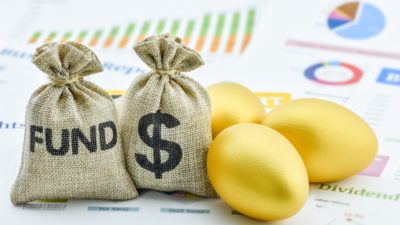You’re probably here because you want to build wealth. Assuming you’re starting from scratch, should you focus on saving more or generating a higher rate of return?
I think you should pay attention to your saving rate first:
- saving rate = net savings ÷ disposable income
Back in the 1980s, Canadians saved as much as 20% of their disposable income! In the last few years, saving rates have sadly dwindled down to 3-6%.
This partly has to do with low interest rates. Why bother put money in a savings account when they earn you close to nothing?
What about the bond yield from the Government of Canada? The one- to three-year bonds average yields of less than 0.80%. Even the long-term bonds of five to 10 years yield only about 1.3%.
Some people end up spending more money than they mean to. The motto seems to be “enjoy life now before things become more expensive.”
However, low interest rates aren’t an excuse to not save.

If you’re willing to be more adventurous, you can generate higher returns by exposing yourself to higher risk through stocks.
Now, higher risk doesn’t mean you’ll lose your hard-earned savings. It just means you need to pick stocks carefully and buy at the right price.
At the end of the day though, it comes down to the fact that you need to have some savings to start investing. If you can save, say, $50 per month, then your best option will probably be buying into a broad market index, such as SPDR S&P 500 ETF Trust (NYSEARCA:SPY), over time. By doing so, you should earn a long-term rate of return of about 7%.
Once you’ve saved up a sizeable amount from compounding returns from your broad market index investment, you can decide if you want to convert to individual stock picking to boost your returns.
It’s not unheard of to earn rates of returns of 8% or higher from stock investing. You may think, “8% is only 1% higher than 7%. Why would someone spend extra time to manage a stock portfolio for a mere 1% additional return?”
Over the long run, 1% of compounded returns can make a big difference. Let’s say you’ve amassed $10,000 and continue to put in $50 per month in your portfolio. If you earn an 8% rate of return, in 30 years, you’ll amass $183,875.
What if you had invested for a 7% rate of return instead? You would only have amassed $142,163. That’s a $41,712 difference, which is many Canadians’ one-year salary.
An 8% rate of return is actually pretty conservative for stock investing. So, you don’t have to risk life and limb to get satisfactory returns for your hard-earned savings.
Here are some conservative stock ideas that can deliver a long-term rate of return of at least 8%: Royal Bank of Canada (TSX:RY)(NYSE:RY), Fortis Inc. (TSX:FTS)(NYSE:FTS), and Telus Corporation (TSX:T)(NYSE:TU).
Investor takeaway
Initially, your saving rate is more important. Without savings, you have no money to invest. As your investment portfolio grows, the returns generated from it will have a bigger effect on your wealth building.
So, once you’ve developed a habit for a specific saving rate of, say, 10%, you should look into improving your rate of return. You’ll find that, historically, stocks, tend to outperform other asset classes.









